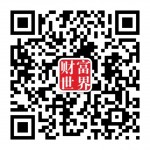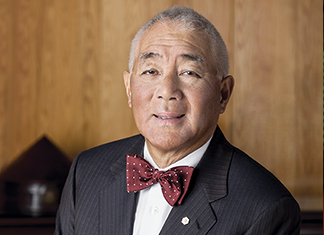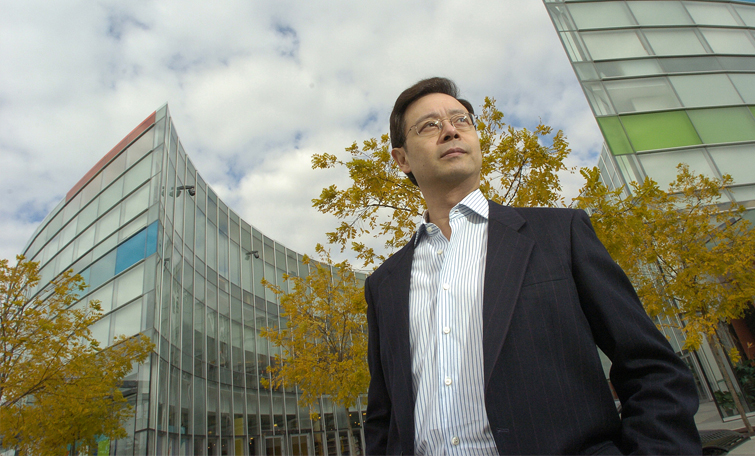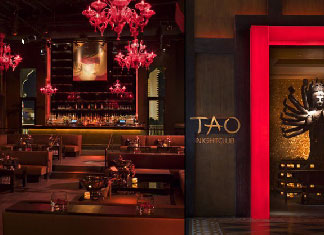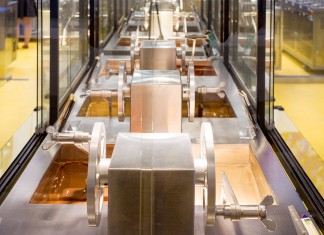Turbulent Conditions Continue for the Shipping Industry
- Caifu Magazine | by Millie Lou
- EN


The shipping industry is facing challenging times. Overcapacity, low consumer demand and low charter rates have caused shipping companies to cut costs in an attempt to make up lost revenue. In April 2016, global credit ratings firm Fitch Ratings released a bold statement: “Mergers and acquisitions, rather than the historically more popular alliances, are inevitable to address chronic overcapacity and drive further cost savings in container shipping.” In the first half of 2016, three mergers and acquisitions between the world’s largest shipping companies took place: (1) China’s state-owned enterprises (SOEs) COSCO and China Shipping Group merged, creating a new shipping giant; (2) France’s CMA CGA acquired Singapore’s NOL; and (3) Germany’s Hapag-Lloyd merged with United Arab Shipping Company (UASC).
In August 2015, the Chinese government suspended trading in eight affiliated companies of Beijing-based China Ocean Shipping Company (COSCO) and Shanghai-based China Shipping Group. The move revealed the government’s intent to restructure the two shipping giants. The deal closed in February 2016.
The merger follows the government’s policy of reforming SOEs to become more competitive in the global market. The Chinese State Council originally announced the economic plan to reform SOEs in November 2013, and the government reiterated that sentiment in September 2015 in an official paper. In addition to shipping, SOEs that recently merged include train manufacturers China CNR Corporation and CSR Corporation Limited in May 2015, China Metallurgical Group Corporation and China Minmetals Corporation in December 2015, Wuhan Iron and Steel (Group) Corp and Shanghai Baosteel Group Corporation in June 2016, as well as travel agencies China National Travel Service (HK) Group with China International Travel Services Group in July 2016.
The new shipping company, headquartered in Shanghai, has taken the name China COSCO Shipping Corporation Limited (COSCO Container Lines) and it is headed by Chairman Xu Lirong, who was previously the Chairman of China Shipping. Before the merger, COSCO and China Shipping were ranked sixth and seventh, respectively, in shipping cargo capacity worldwide. Following the merger, the new behemoth is ranked fourth overall with a capacity of 1.6 million twenty-foot equivalent unit (TEU).
Also before the restructuring, COSCO and China Shipping belonged to different alliances. In the shipping industry, alliances are commonly formed among ocean liners to reduce cost and share facilities, similar to code-sharing among airlines. In April 2016, two months after the merger completed, COSCO Container Lines along with CMA CGM, Evergreen Line and Orient Overseas Container Line formed Ocean Alliance, which will begin operations in April 2017 for five years.
CMA CGM, a key member of the new alliance, is the world’s third-largest shipping company with a capacity of 2.3 million TEU. In December 2015, the privately held and family run company headquartered in Marseille, France, announced its acquisition of Singapore’s Neptune Orient Lines (NOL) for an all-cash offer of approximately $2.4 billion USD (all currency amounts in U.S. dollars unless otherwise noted). At the time, the offer was a 49 percent premium to NOL’s share price.
Rodolphe Saadé, CMA CGM Vice-Chairman and son of founder and CEO Jacques Saadé, said in a statement: “At a time when the shipping industry is facing strong headwinds, scale is more critical than ever to capitalize on synergies and capture growth opportunities wherever they arise. I firmly believe CMA CGM will enable NOL to address the industry’s new challenges.” NOL was Southeast Asia’s largest container shipping company and one of its notable brands is American President Lines (APL). The acquisition means CMA CGM will achieve a market share of almost 12 percent. When the deal completed in July 2016, NOL delisted from the Singapore Exchange.
CMA CGM expanded its trade routes with the NOL purchase. Hapag- Lloyd AG hopes to achieve the same through a merger with United Arab Shipping Company S.A.G. (UASC), originally announced in April 2016. UASC is the largest container shipping company in the Middle East, ranked eleventh in the world, while Hapag-Lloyd is currently ranked sixth. In July 2016, the two companies signed a business combination agreement, with plans to close the deal by the end of the year. Rolf Habben Jansen, CEO of Hapag-Lloyd, said in a statement, “This strategic merger makes a lot of sense for both carriers – as we are able to combine UASC’s emerging global presence and young and highly efficient fleet with Hapag-Lloyd’s broad, diversified market coverage and strong customer base.”
Hapag-Lloyd also expects a net synergy of $400 million in annual savings from the merger. The company will remain publicly listed on the Hamburg and Frankfurt stock exchanges and headquartered in Hamburg, Germany. Upon completion, Hapag-Lloyd will own seven percent of the market share, rank among the top five shipping companies, and challenge COSCO Container Lines -- currently ranked fourth -- with approximately 1.6 million TEU.
Fitch Ratings has a negative outlook for the shipping sector. In a report, 2016 Outlook: Global Shipping, the credit rating agency cites, “Muted global trade growth and the economic slowdown in emerging markets [will] exacerbate overcapacity, leading to declining and volatile freight rates.” Fitch believes mergers and acquisitions are key tools for shipping companies to navigate the choppy conditions. There may be more megadeals made in the future as more companies look to save on costs.
M&A Roundup
Tesla offers $2.6 billion for SolarCity
Tesla and SolarCity announced in June 2016 that they will merge following an all-share transaction. Elon Musk is a major shareholder and the Chairman of both companies. A more concrete deal was signed on August 1, 2016, with projections that the deal will close in the fourth quarter of 2016. SolarCity’s official blog explained the rationale of the transaction, “By joining forces, we can operate more efficiently and fully integrate our products, while providing customers with an aesthetically beautiful and simple one-stop solar + storage experience: one installation, one service contract, one phone app.” Even though SolarCity claims the merger will achieve $150 million USD in cost synergies, skeptics are less optimistic (all currency are in U.S. dollars unless otherwise noted). Growth at SolarCity has slowed because regulators in Nevada have removed incentives for people to install solar panels in their homes.
Didi in pursuit of Uber China
Didi Chuxing disclosed on August 1, 2016, that it will purchase Uber China. The disclosure arrived a few days after the Chinese government decided that car-hailing services are legal. Uber entered the Chinese market two years ago. Travis Kalanick, Uber CEO and co-founder, explained in a statement: “Uber and Didi Chuxing are investing billions of dollars in China and both companies have yet to turn a profit there. Getting to profitability is the only way to build a sustainable business that can best serve Chinese riders, drivers and cities over the long term.” Didi did not reveal the specific terms of the acquisition other than a blurb that stated Uber will receive 20 percent equity in the newly merged company. Bloomberg reported Didi will invest $1 billion in Uber as part of the agreement.
Japan’s Softbank to acquire Britain’s ARM for $31 billion
In July 2016, Softbank, Japan’s telecommunications giant, founded by Chairman and CEO Masayoshi Son, and ARM Holdings Inc., a semiconductor company, agreed to an all-cash transaction that represented a premium of approximately 43 percent of ARM’s shares. The deal is valued at 24 billion pounds and expected to close in the third quarter of 2016. This is the largest Japanese acquisition in Europe.



